It is fascinating how a “not so big town” of Varanasi can indulge travellers in a variety of experiences. The bustling Banaras have been travellers’ sought after destinations for ages. Let me show you what 30 exciting things you can do in Varanasi during your next trip.
1. Rejoice in the Ganga Ghats.
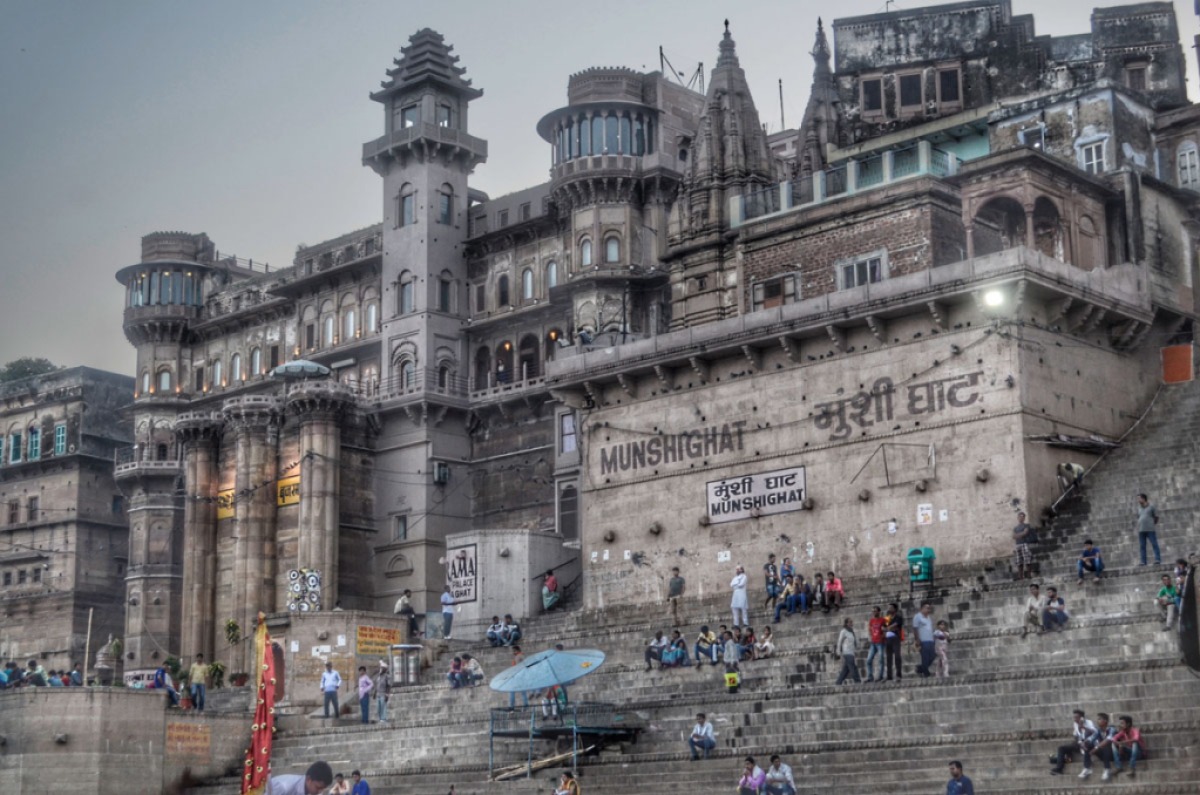
Ganga divides the land into east and west banks. Ghats on the west and sand beaches on the east. More than 80 ghats are named differently after the king/queen who built them. Some ghats are even named after a few Indian politicians. Some are historically significant, while others are religiously important.
But all the ghats hold one thing in common – they are serene in the morning, vibrant by the afternoon, divine by the evening and silent by night. Priests, worshippers, wanderers, barbers, masseurs, kids playing crickets, chai sellers and Babas – The Ghat is always eventful but still gives you a sense of calmness because of its openness and the slight sound of flowing Ganga.
Some even have funny stories – If a husband and wife dip in Ganga at Narada Ghat together, the couple will fight lifelong. The couple has to do Pooja for Durga at the ghats to break the curse.
2. Wander in the Gully of Banaras.

Though many rulers and Britsh were there in Varanasi, the city was never captured wholly by invaders. The reason must be the gully, AKA narrow alleys. The maze of shaded alleys is always full of surprises – The Bajji & Malai shop, paan seller, locals catching up with neighbours behind their century-old houses, the projecting ornated cornices, cows passing by, bikes vrooming, Khadi shops, silk saree shops make every turn interesting.
If you walk early in the morning, you even witness people sleeping by the sides of the alleys inside a niche. Trying not to step on cow dung early in the morning makes it even more playful. Once the sun is up, sunrays penetrate, lighting the sidewalls, and the street gets cleaned by civil workers. Ultimately the alleys lead to the enchanting river view at its end.
3. Devour Kashi street food

Whenever Banaras people in Bangalore complained about not getting good chats in Bangalore, I wondered why they whined. Once I had that first bite of Kachori poori with Channa ki Dal, I understood the Banrasi’s problem outside their city. Their street food is heavenly.
Most of them are deep-fried, while some are baked. If you are worried about hygiene, ask your host for recommendations or take a paid food tour. Kachori and Samosa chat open for breakfast, while Golgappa and Palak Patta chaat shops are open by evening. It was shocking to see the south Indian delicacy Dosa shops on every corner of Kashi street.
4. Explore Saree Gaddi markets of Old Banaras.
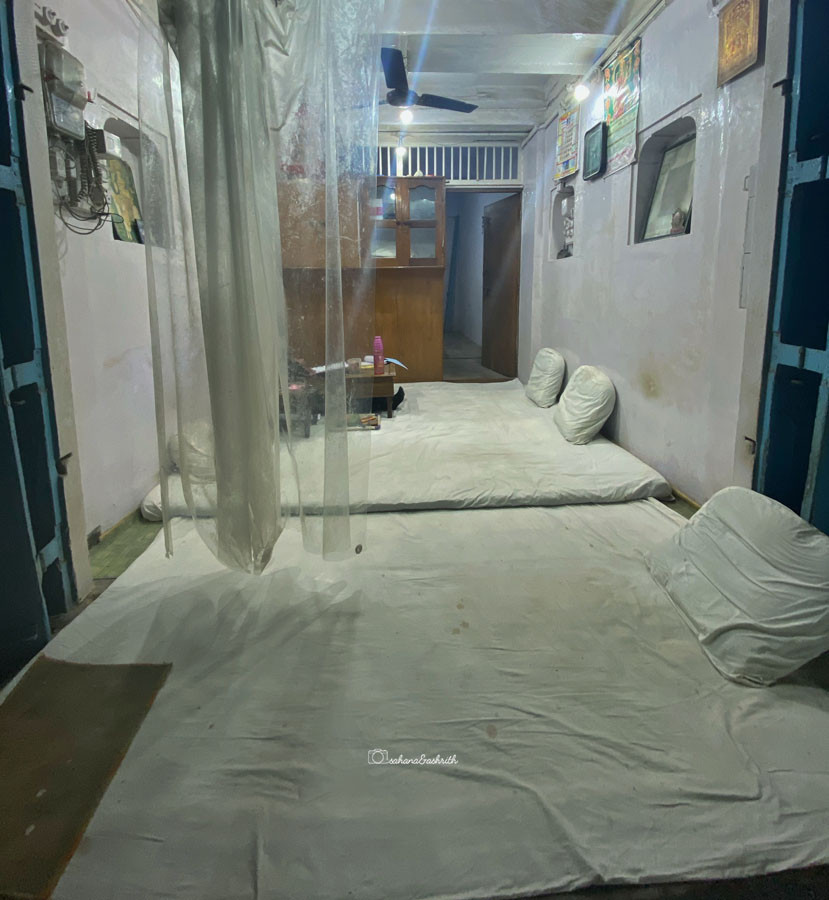
On the way to the Blue Lassi shop at Kunj Gali, we saw small shops on a metre high plinth. There was nothing else except for the mattress with a white bedspread on it and an owner who was busy going through his Facebook videos on loudspeakers. No stacked shelves, no mannequins and no display item. “Those are Saree Gaddi”, Our food tour curator explained. – Meaning, beds for Sarees! Varanasi is a compact town, and every square foot matters.
For over 100 years, Varanasi saree merchants have had a unique way of maintaining shops without stacking up items. When you walk near these shops, you see men carrying a bundle on their shoulders. When a customer comes, the owner asks what kind of sarees the client wants, calls the warehouse, and weavers ask them to get a bundle of that particular type of sarees! Doesn’t it sound like Amazon & Flipkart?
5. Witness the magical ritual of lights – Ganga Aarati.

Irrespective of your religion and your belief, the Ganga aarti ceremony evokes some kind of positive vibration in you. At Dashaashvameda ghat, five scholarly priests wearing almond colour silk Dhoti and a shirt with Shalya stand facing Ganga and devotedly perform the Puja for more than an hour. The ritual starts with a simple Bhajan. All spectators also join in singing, followed by Dhoop and various types of Aaratis with fire circling and flowers in a synchronised rhythmic manner. The Puja instruments they use are unique, and their designs are something you should observe.
I have watched Aarati Four times from different spots. The best spot is the first row by the sides of the priest’s platform on the ghats, and the worst is from the boat. Most people here are soaked in devotion and are there to observe Pooja. And the rest are to click photos and pose as a devotee for an Instagram photo. This time is the best time for people to watch, and it’s a lot of fun once Aaarati gets over.
6. Make a day trip to Badhoi carpet village.

Perhaps, the Badhoi artists are India’s unheard and least celebrated artists. 90% of India’s handmade carpets are made here. Still, the village is unheard of. The fact of how Iran’s carpet masters travelling to King Akbar’s court taught the villagers carpet-making art in the 1590s is sure to shock anybody. The way their hand moves swiftly, delicately weaving thread by thread to create the contemporary design, is hypnotic to watch. Every house in Badhoi is into Carpet making. An 8’x10′ carpet that you get in a branded store costs you 3500Rs, and you get it here for 600Rs.
7. Go to the “Chowk” early in the morning.
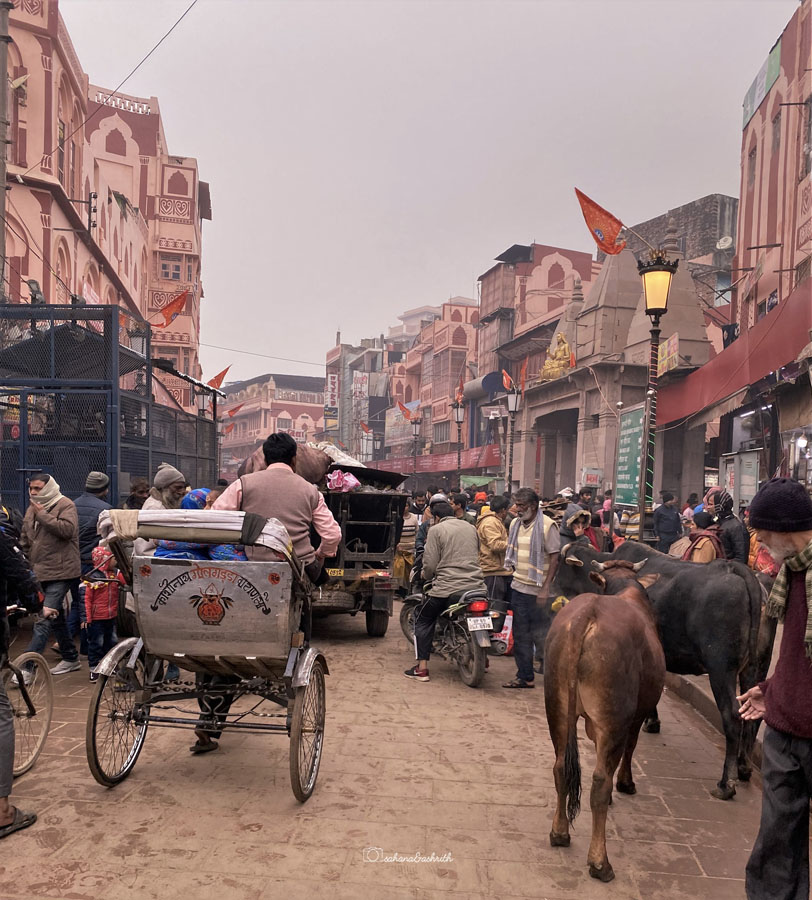
Chowk means square where four road joins. There are many Chowks in Varanasi, but the most important one is the “Chowk” The four road that meets/radiates at this point represent four principles –
- Dharma( Rightfulness) – Road to Vishwanatha temple,
- Artha (Money) – Tateri Bazar- Brass smiths & utensil sellers
- Kaama ( Pleasure/Enjoyment) – Most music schools are located on this road. Shehnai Musician Bismillah Khan’s house & brothels during olden times existed here.
- Moksha (Salvation) – The road to burning Manikarnika Ghat.
Standing and watching modern Banaras life unfold with Cycle rickshaw bell sound, chai sellers boiling tea and cutting gingers at corners, and four men carrying a dead body to the Ghat is an unworldly experience.
8. Walk beside the river ghats to ghats at sunrise.
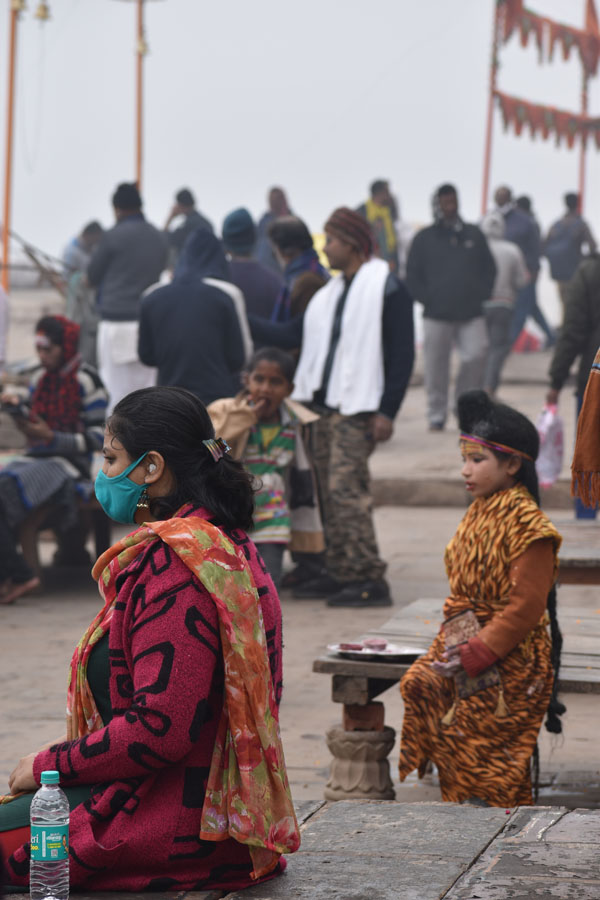
The way mother Ganga looks when the first rays touch her is surreal. She glows bronze and makes you believe she is a descendant of heaven. By then, pigeons and seagulls would already be hungry and waiting for their namkeen breakfast. Babas take a dip in freezing water (if it is January) as if it was a heated pool and apply ashes on the body.
Morning joggers, Fitness freaks who do it more by the riverside than at the gym, do push-ups on the steps. When you move towards the main worshipping ghats, priests adjust their big umbrellas, and some have already started Pooja. The devotees do Pinda Pradhan religiously, remembering their dead ancestors in silence. Sound of birds mewing and priests chanting, jogger’s footsteps and the glowing Ganga – I wish Ganga mornings get stretched further for the day.
9. Take multiple boat rides.
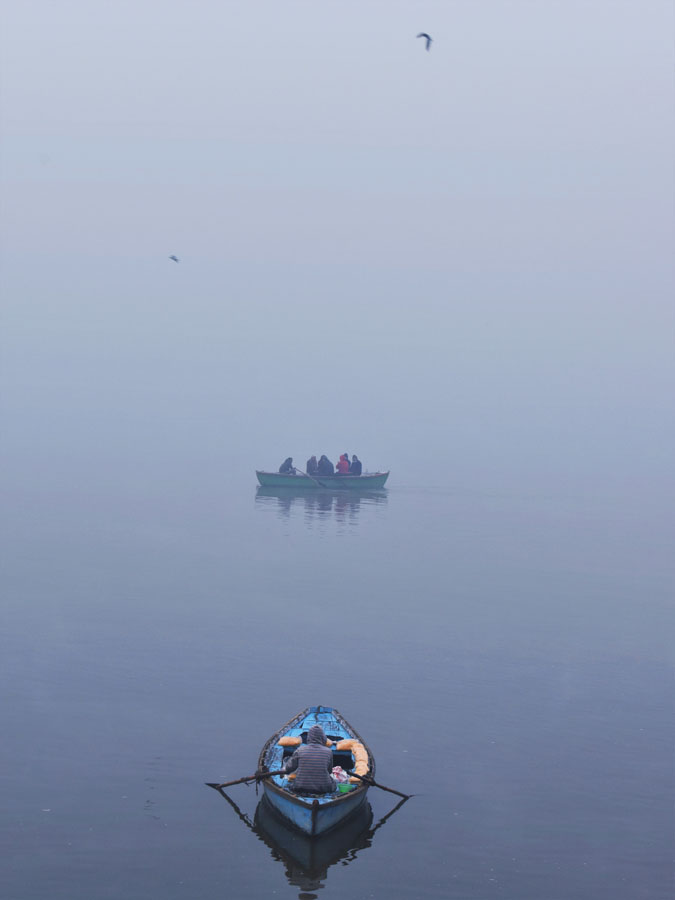
Most prefer a sunrise time boat ride; it isn’t enough to savour the experience. The ghats are so full of life that you have to feel it from far multiple times. Surely, the sunrise is good, but evenings are equally great to see the madness happening on the east bank. The photographers prefer early afternoons. In contrast, spiritual seekers like to go for a cal boat ride by dusk.
10. Enjoy the Bhajans and music classes run by locals.
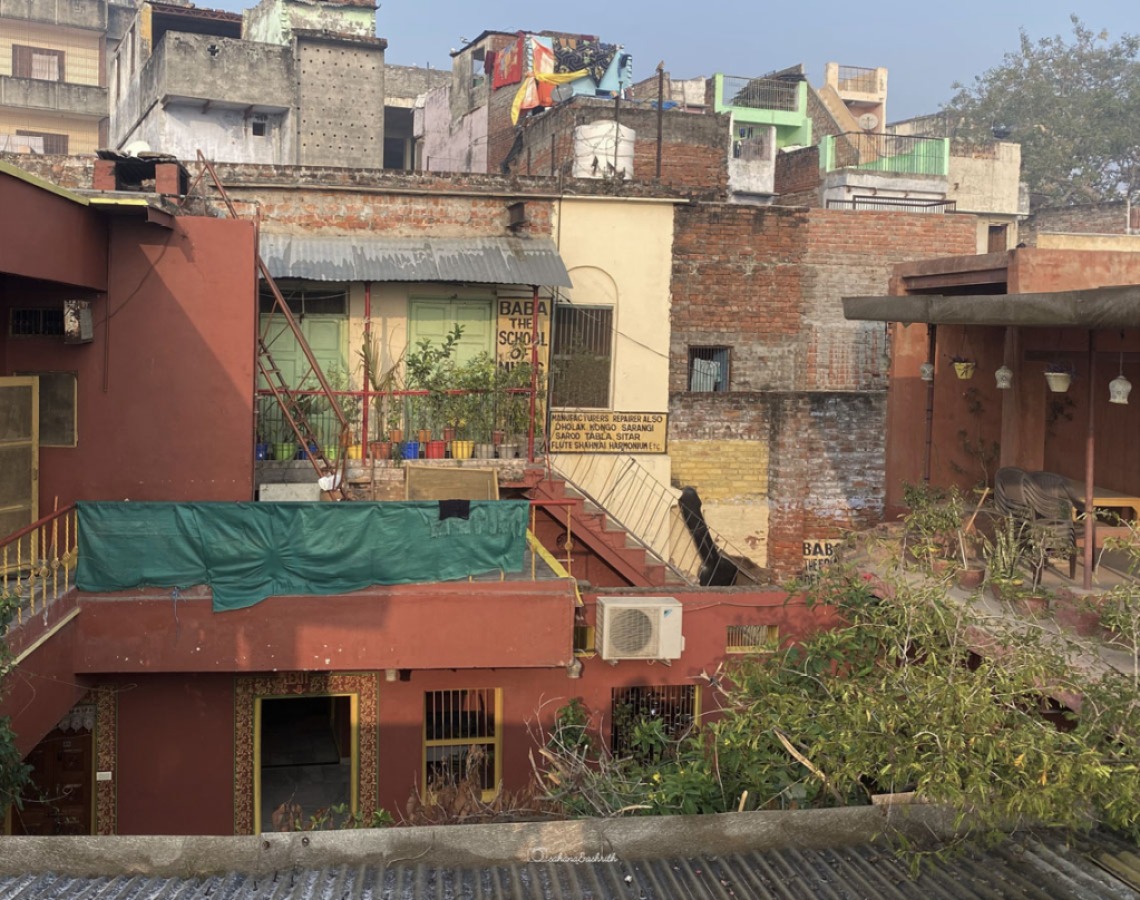
You need not put any strong effort into experiencing Musical Kashi. When your walk in the residential area’s alleys in Northern town, you hear Bhajans constantly. If you request the owner, some let you in to join Bhajans. Otherwise, sitting by the window sill of a chai shop nearby, you can always have a listen.
Next to the guesthouse where we stayed, there was a music school. On two evenings, we were blessed with the music of Tabla when students and masters practised. If you want a real musical performance live, request the ongoing music schools or look for shows – Banarasi music is unique and divine.
11. Take Cycle Rickshaw rides.

The town’s main transport mode is the cycles fitted with a seat and an overhead cover. They are better than auto rickshaws because they can sometimes come inside the narrow alleys. Plus, a ride on them gives you a different city perspective.
12. Go to the Eastern bank to dip in the river in the morning.
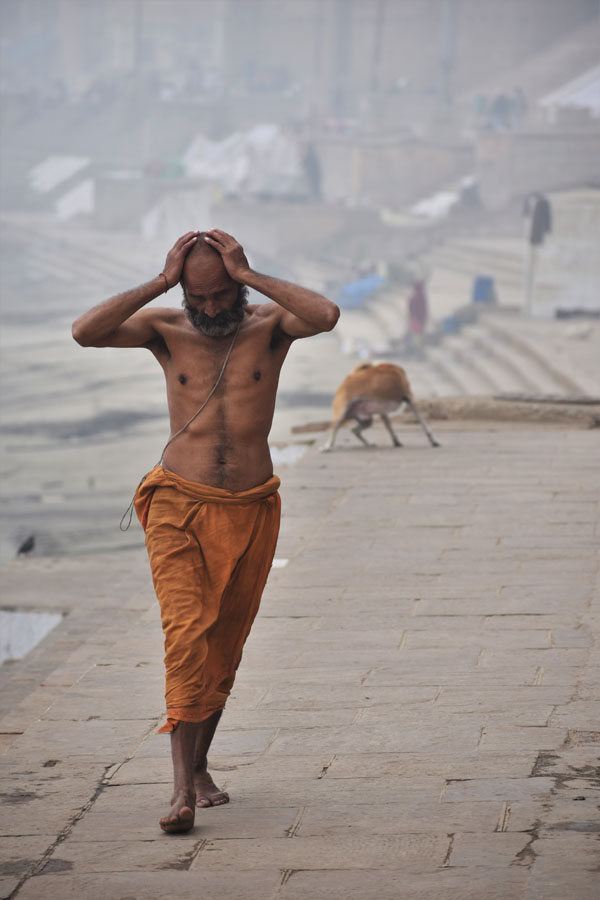
Hindus believe that a dip in Ganga washes their sins away. So we took dips after dips, threw used clothes, let the dead bodies float and committed more sins. We have changed, and people are changing. We take dips but don’t do the rest. Since many prefer a dip at Manikarnika and Dashaashwameda Ghat, I recommend you to go further away opposite these and take a dip in cleaner water. If you aren’t used to cold water, dipping in January may be a fatal try.
13. Witness the death and life reality at the burning ghat – Manikarnika.
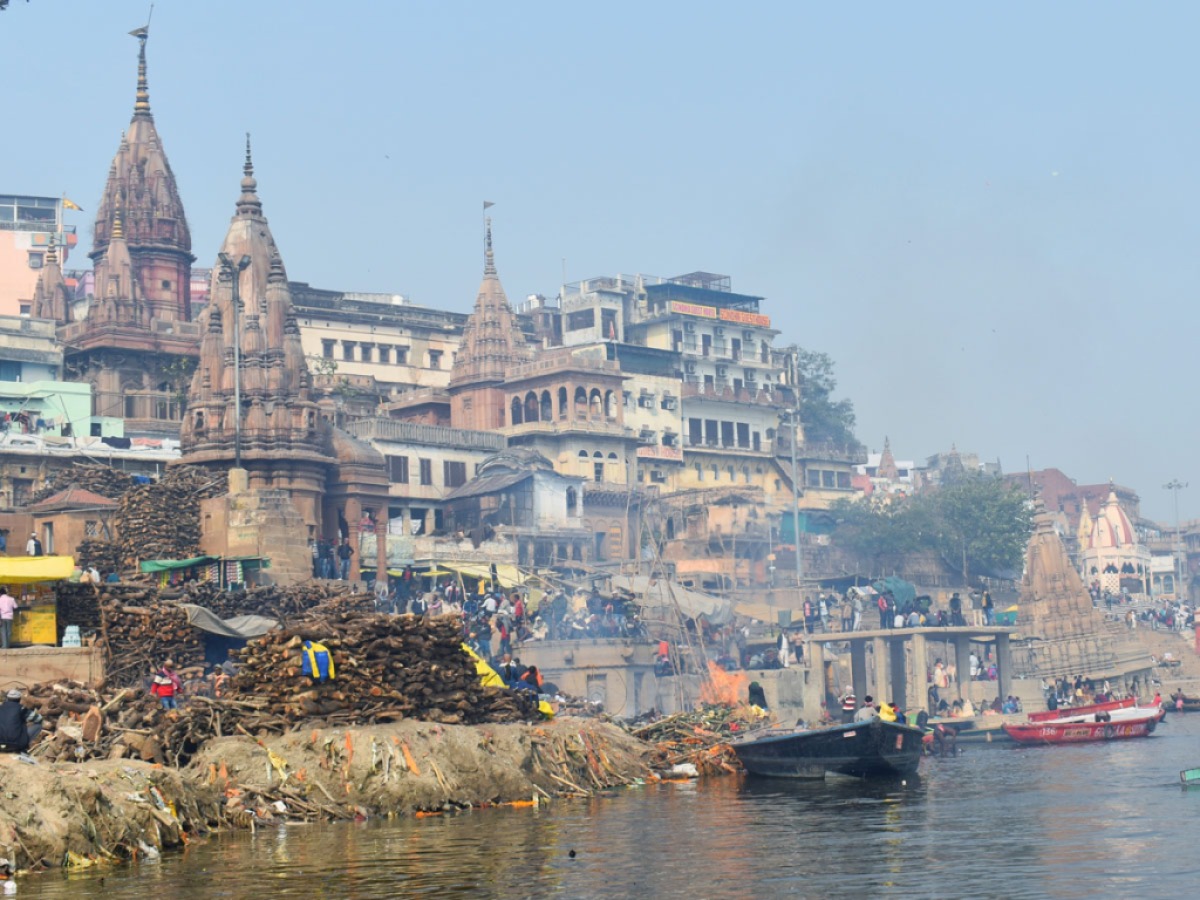
The transition from happy and happening “Chowk” to the ghat where dead bodies are burned on a wooden pyre is strange/heartbreaking and satisfactory. Though this is where people say a final bye to their departed loved ones, you don’t see people crying because they believe that the one who burnt at this Ghat attains salvation.
So they say, “Why cry when your loved ones are on the way to reach God and salvation” The Ghat is mainly related to death. But you see a particular community who manages the burning pyre, collects ashes in a wok to wash it away and finds gold/silver valuables to make their livelihood. This is the raw moment to see how someone’s death is a source of life to the other.
14. Take an evening stroll exclusively to observe graffiti.
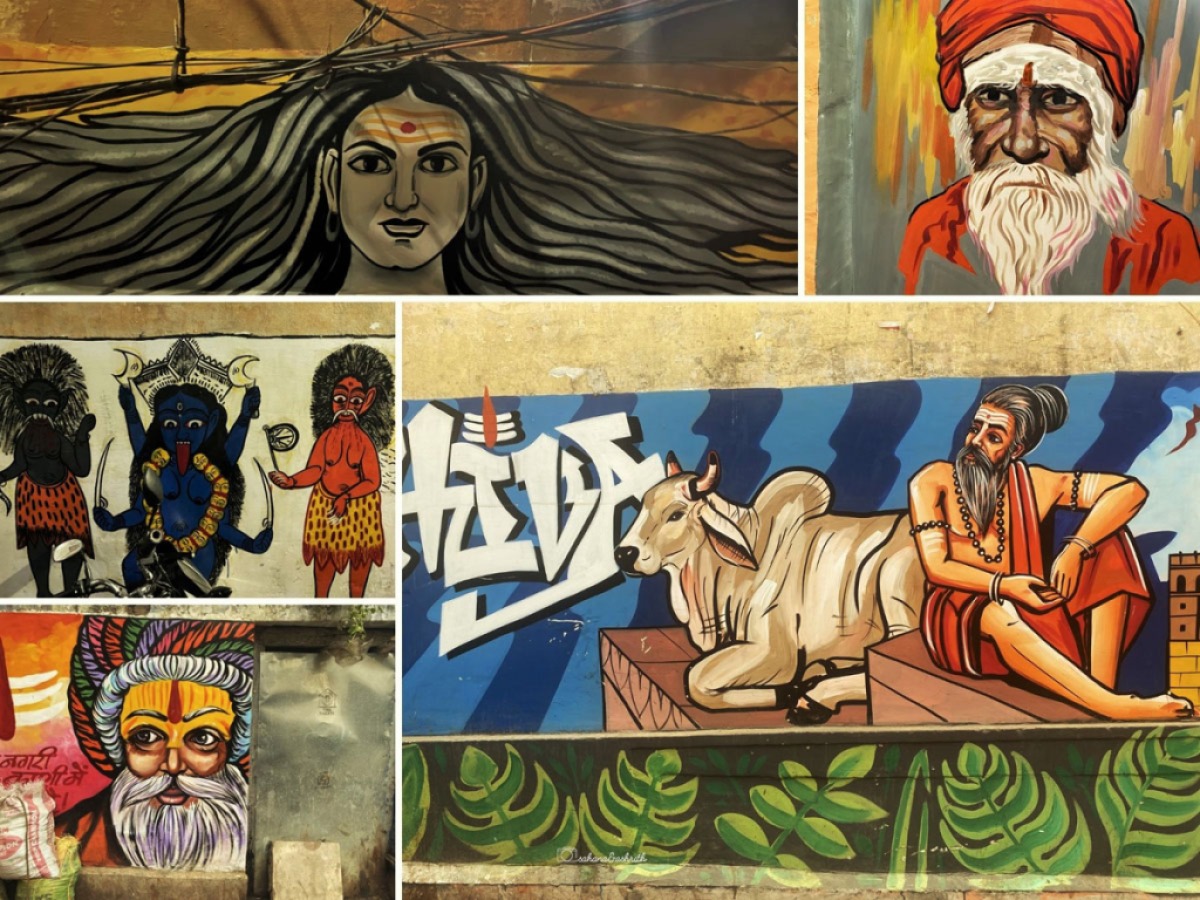
Particular communities in Kutch and Maharashtra’s Warli have been known for centuries. Street art in modern India was mainly posters of movies in the olden days. The graffiti culture evolved and is best found in Varanasi, perhaps.
Being the city of gods and goddesses, most arts are on a religious tone with a twist and quirk. The dark shaded alleys with these bright paintings on the century-old Havelis brightened the area. Varanasi artists know it to do the best, and you must go for a walk to observe these. The best lanes to see these are near Brijarama palace, aadha aadha cafe, Bandhari Gali, and On the way to Manikarnika ghat.
15. Visit Vishwanatha temple

The town revolves around lord Shiva. They say there is a shiv ling in almost every house in the oldest residential area of the town. Invaders destroyed the original temple, and Madhya Pradesh Queen Ahilya Bhai Holkar built the existing one in the 1780s. With urbanisation, the houses and chai shops swallowed every inch of the temple surrounding, leaving no blank space. So the usual temple feeling with courtyards around died with time.
When I went in 2017, I had not felt a thing about the holy place – it was just a ritual. But in 2022, the renovated complex is all about divinity. Around 495 houses were demolished, and families were relocated with compensation to accommodate the actual complex. Morning 6-7 is the best time, and gate number 2 is the least crowded entrance.
16. Go cafe hopping.
Having Aloo tikka and Chuda Mattar is true to Varanasi. But with so many foreign travellers flocking to the town, areas near southern Ghat have adapted and modified themselves so much that cafe & hostel culture is super strong. From Korean Kimchi to Israeli Saksuka, you get everything in these lanes.
When you expect the cafe names to be typical to Kashi, like “Kashi Chat Bhandar” “Lakshmi Chai stall”, here you find ” Bowl of Compassion, Lucy’s cafe, Brown Bread Bakery, Filo cafe, Sushi Cafe”- Museli to Porridge, Cappuccino to espresso, Pizza to cinnamon rolls, this part of the town surprises you. The best part is most cafes add a local touch to the international ambience, including their menu card.
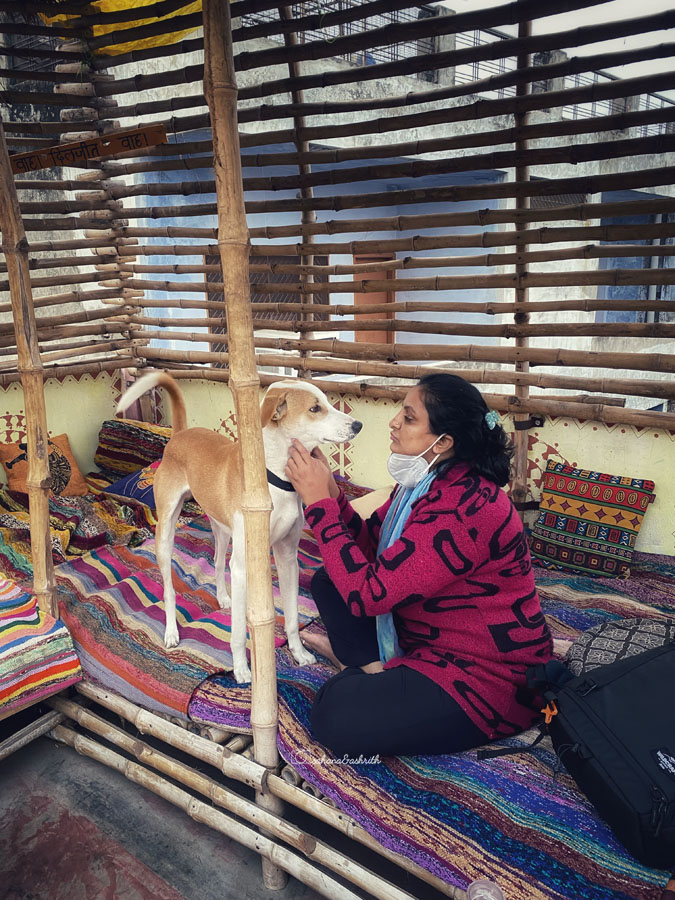
17. Go cycling in the calmest area of Kashi – Banaras Hindu University.

If you are overwhelmed with the buzz of Banaras after a week, you must take a cycle rickshaw to the cleanest, calmest and greenest area of the town – Asia’s largest residential University, built-in 1916. The wide roads lined with tall trees, traditional buildings popping up here and there, students cycling around – your morning walk can easily extend up to afternoon because it covers 1300 acres and 140 departments, hospitals and schools!
We chose to sit beside a group of students with his teacher learning Sanskrit in the open air for a long then walked around for 2km until we smelled Jalebis from the nearby shop.


18. Visit an ancient Haveli.
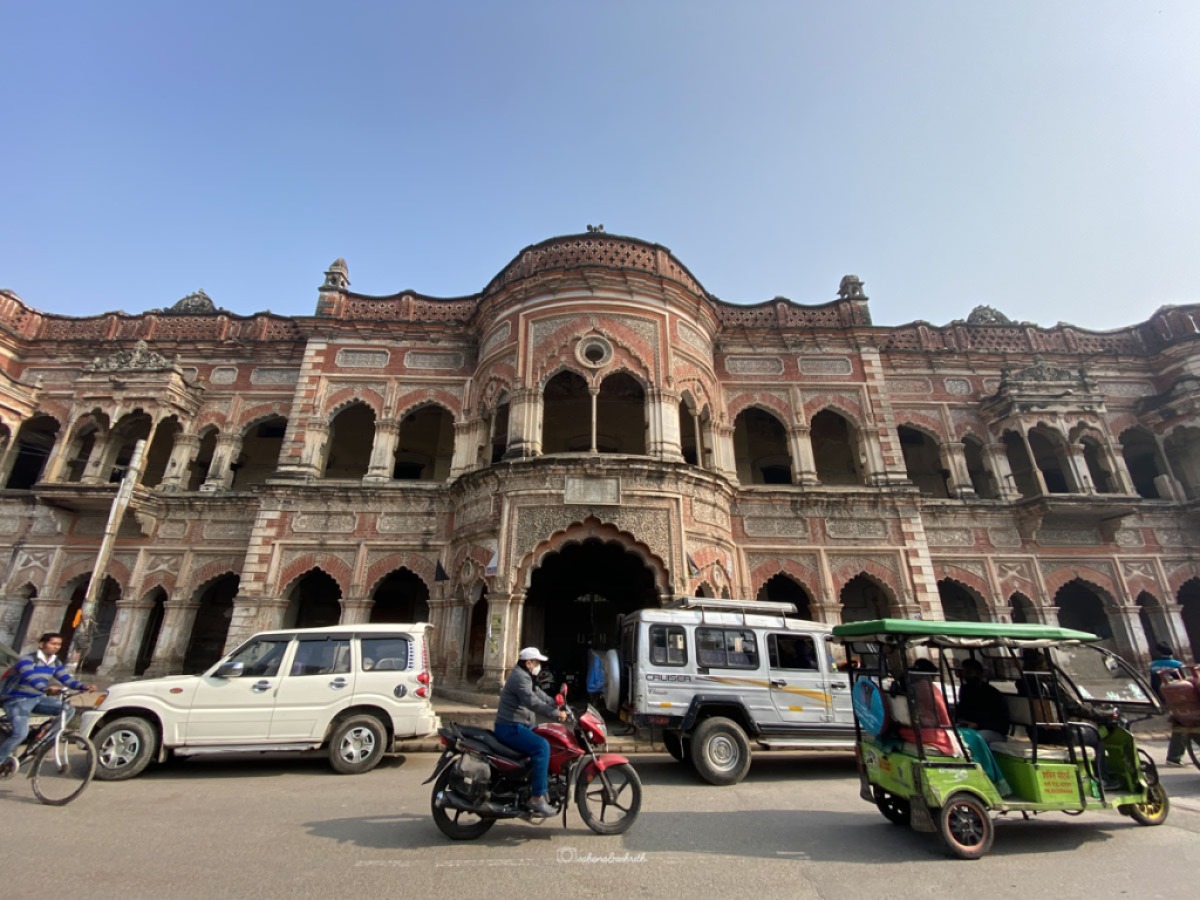
Most guesthouses you stay by the Ghats are ancient Haveli converted into accommodation. Some successfully keep the old charm, and others have over-modified to suit travellers. When you walk in the Northern and southern alleys, you are never away from the actual Haveli, where people have lived for 2-3 centuries.
While I stopped at every interesting, colourful door near Kaal Bhairav temple, an older man chatting with his friends outside the house explained how old the houses were and how lavish are they inside. I wish I had taken advantage of it and requested him to let us inside his Haveli.
19. Get a massage from a barber on the ghats.

The streetside barbers are a usual scene throughout my nation. The Barber on the ghats takes it one step ahead, offering you 30-60 minutes massage on a chair for men. They have an eye for catching tourists who are sitting and watching Ganga. Ashrith took a 30 minutes massage, and he dozed off for the next 30 minutes at the ghats on my lap – It was that relaxing.
20. Take a detour from main roads to serenity at hidden temples.
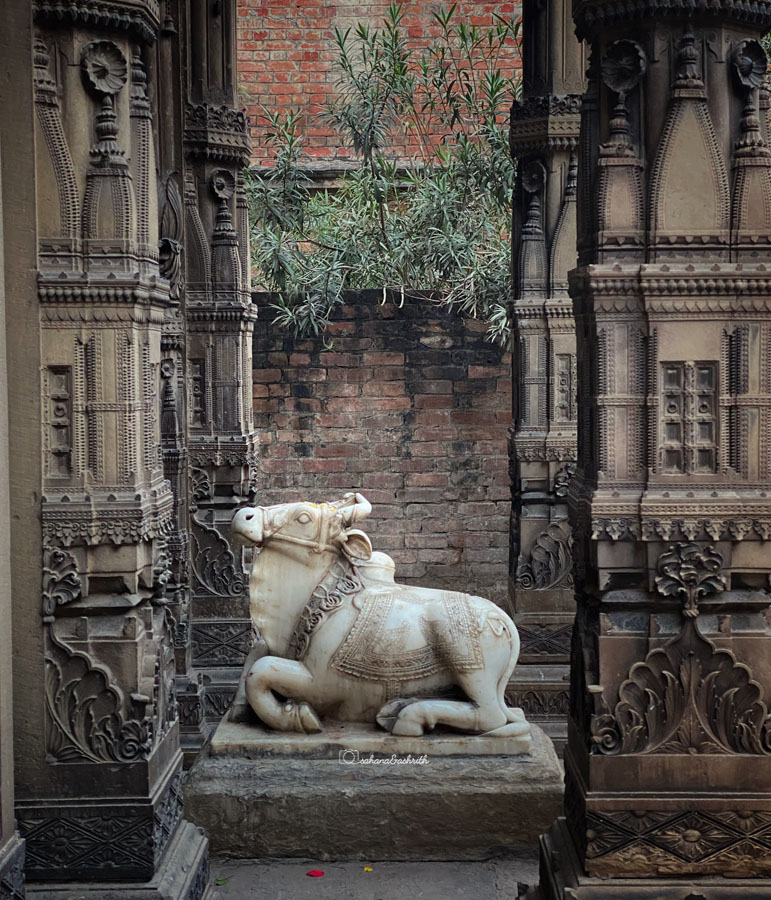
I wonder if there are more temples or homes in old Varanasi. Some are private, and most are open to the public. Most crowds stick to the named famous temples. Not so famous ones near Ghat are places for Gaanja smokers in the morning and the homeless to sleep at night.
Then there are some tucked away in the alleys on a higher plinth that shifts vibrance to serenity. If you see a towering Gopuram far, follow the same direction to have a quiet reading time or eat your packed lunch.
21 Sip chai in clay pots with locals.

Banaras men are chatty ( We hardly saw any local women outside their house, and men are chatty in a positive way). You should break the ice to crack a conversation politely, and they will carry it further with fun, laughter, and some valuable information about the city.
Unlike before, they don’t always try to sell your product. Mostly they talk to you about their childhood in Banaras and their favourite paan shop. This all happens at the streetside Chai seller.
22 Feed Siberian seagulls on the river

The birds migrating thousands of kilometres in a particular season always amused me. Fortunately, we were at Varanasi in winter when these white seagulls with orange beaks & stripes of black on their body continuously flew over the river. For some reason, their favourite food is Besan based fried namkeen, and you find lots of sellers at famous ghats selling these in grams to Kgs.
On your boat ride, buy at least a 250gm packet to feed the seagulls and witness the white birds flocking around you with constant mewing. Probably feeding these birds was one of the happiest moments in Kashi.
23. Explore non-popular ghats for some “Quiet Me Time.”
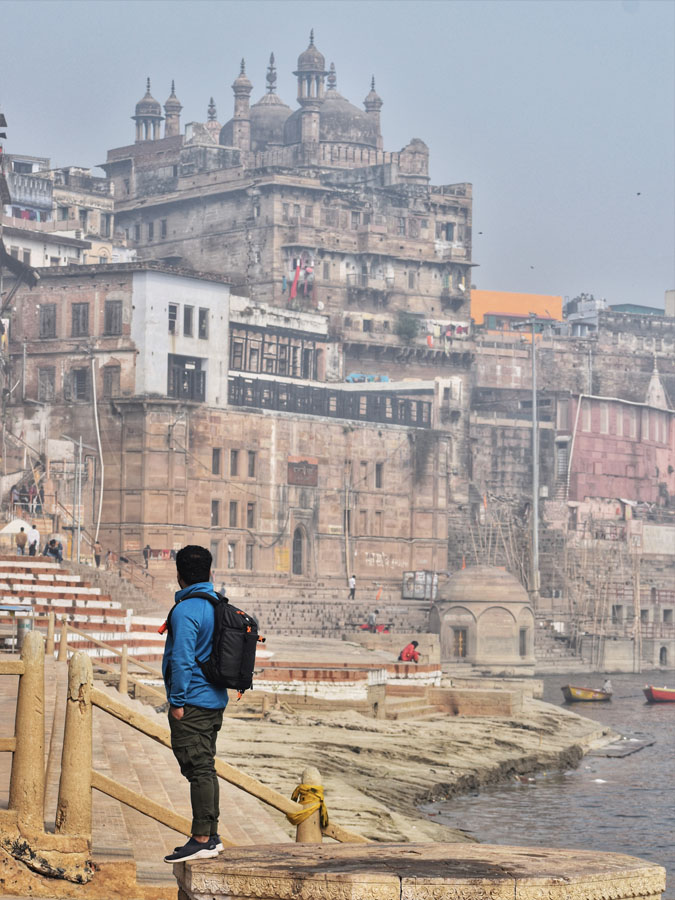
Historical ghats like Bhonsale ghat are not famous among tourists. Usually, local couples and young boys who want a photoshoot come to this Ghat. Plus, a star hotel right after the steps maintains the place well. The mosque in the background and old Havelis with Jharkoas/Bastions by the riverside is a hidden gems.
24. Watch local life unfolding at Godowlia chowk at 5 pm.

Ok, if you want to witness the real madness, be at the Godiwila chowk between 4–6 pm. As Indians living in the country since the 1990s, we hadn’t seen an insanely crowded place like this. The mornings and noons are usual. But 4 to 6 is when locals come out for their daily usuals and munch on chats. Dupatta sellers to cycle rickshaw guys, cows to snake charmers, all will be out at this square by five, and the crowd moves phenomenally.
25. Take a break from spirituality and watch locals playing cricket on the ghats.

When the weather is cloudy or it’s a non-tourist season. The boatmen and kids around forget everything and pick up a sport considered the biggest religion of India – Cricket. The joyfulness, laughter, shouting and yelling and betting – The seriousness is no less than any world cup match. Also, there are some peculiar rules- the batsman can’t hit a six towards the Ganga. If so, he has to pay for the lost ball. A kid who was looking for his friends to play on betting told us about these house rules.
26. Talk to Babas and Sadhus.

You find hundreds of men in saffron robes in the ghats, alleys and on graffiti. Probably 50% of them are genuine- into meditation, learning Vedas, devoting themselves to the almighty. They usually prefer to stay away from the crowd and visit the river when nobody is there; in contrast, the rest are fake babas with a chillum and ashes on their bodies, asking people for money.
Usually, the real ones don’t encourage you to talk and refuse your request to get clicked. If they let you, they won’t take money from you. Instead, they bless and walk on. The fake babas are used to people like us clicking photos and handing over Gaanja for bucks. The conversations with them are hilarious.
27. Pay tribute to India’s greatest freedom fighter-Lal Bahadur Shastri Ji.

Indians very well know the contribution of honest & eminent second prime minister Lal Bahadur Shastri. His house at Ram Nagar proves how humble and non-corrupted he was. You get to see his 15″x15″ suitcase, which could fit his two pairs of clothes- that is all he owned.
The simple mud floored house, a small room with a traditional wooden truss, and zero ornamentation speak of the man’s simplicity. The well-maintained place is tucked away in the alleys of Ram Nagar and not much visited by regular tourists.
28. Visit mustard fields in nearby villages.

The moment your journey from the airport/railway station in September-March starts, you are rewarded with yellow flower fields, Mustard seeds. Any Indian would get that “DDLJ waala feeling” while foreigners understand why India is the country of colours. These fields surround the main town, and you can stop by for quick photo sessions or a 30 minutes stop to stretch your legs on a day trip. If lucky, the buffalo farmers offer fresh Malai or buffalo milk to die for.
29. Go shopping for Banaras silk sarees & bangles.
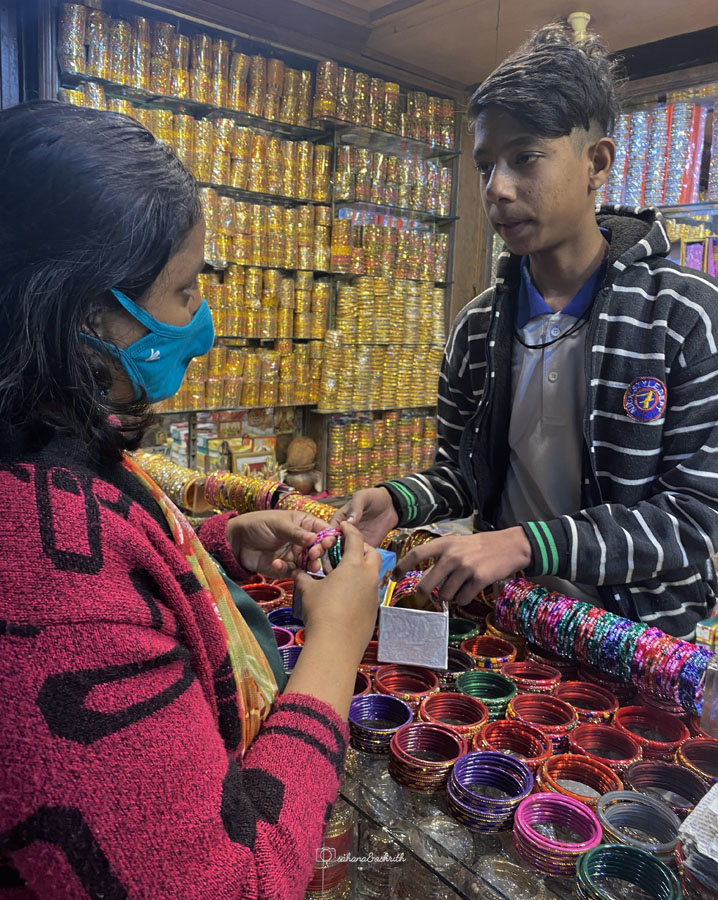
There are varieties of silk and sarees across India. Banarasi saree style developed during the Mughal period is different from the rest with its floral and leaf motif brocade work done using silver and golden thread. There are hundreds of factories to see the making and buying.
But the Sarai Mohalla area is where almost every household owns a handloom. The price range starts from 300Rs and can go up to a lakh depending on the detailed work. The general notion is that Banaras sarees are heavy. But if you buy simple brocade work at a higher price from the handloom weavers, the sarees are the lightest.
30. Make “Pet friends” in Kashi.

Kashi is extremely pet friendly. Not only for cows but also for dogs and goats! Many cafes have their dogs; they keep coming to guests to share their love. The cows are worshipped, and they have the right of way in the alleys. The goats are made to wear a sweater in the cold weather of January! They look the cutest and are always ready to share the love.
Things that disappointed me in Varanasi
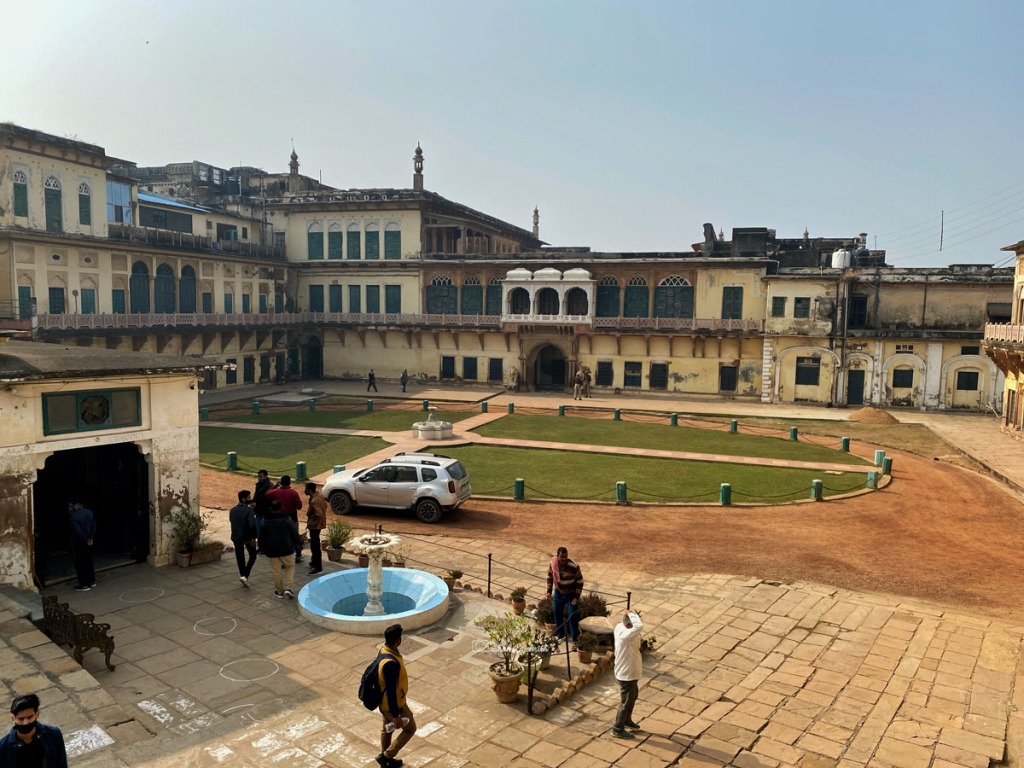
The day trips from Varanasi are super famous among all types of travellers. We took a cab there with a wonderful experience at Sarnath in 2017 and hoped the Ramnagar fort improved. Ram Nagar fort’s famous car museum is the most ill-maintained exhibition I have ever seen. It looked like the cars were never dusted. The most beautiful parts outside the terrace with pavilions are shut to visitors. When we peeped to see between the gaps, the terraces’ condition was horrible, as if they may collapse at any time.
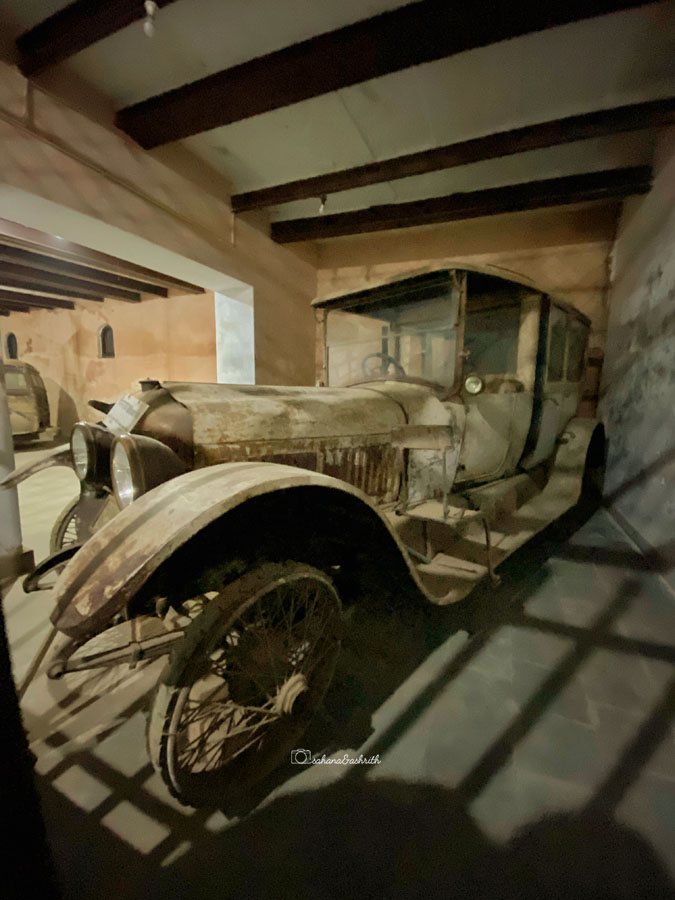
I was sure that Sarnath would be wonderful, but it turned out to be one of the most touristy places I have ever seen. It was more commercialised, touristy, and tacky than Pattaya. The Buddha statues are mere backdrops for tourists in Rayban sunglasses. The historical ruins are a place for reel makers. Perhaps this is the noisiest Buddhist place I have ever seen anywhere.
Then there are thousands of newly built temples like Tulasi Manasa Mandir and Birla temple that neither offer architectural experience nor divinity. These temples are on every sightseeing tour organiser’s list. Hence it is overcrowded most of the time. I wish we hadn’t wasted time on these commercial temples.
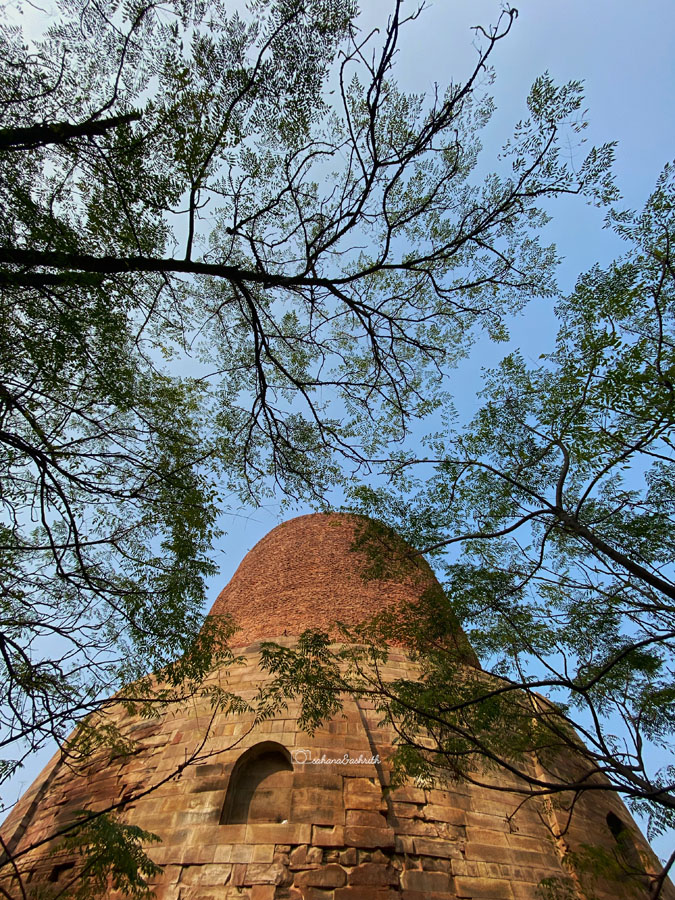
After wasting precious hours at this “over commercialised” place, we decided not to go to Chunar fort. In 2017, it was crowded but hadn’t become over popular. The Ganga that flows near Chunar is cleaner and was a great place for a quick dip. The fort was also maintained decently, and I hope it is still the same.

What would be your favourite thing to do in Varansii? Let us know in the comment section below.




Leave a Reply